The restoration of a panel attributed to Maerten de Vos
Painting conservator Franziska Bunse, who has been a Fellow at The Phoebus Foundation for the past three months, is restoring a panel painting from the foundation’s collection under the expert guidance of Sara Mateu and in collaboration with Brian Richardson. This work is attributed to the circle of the Antwerp master Maerten de Vos (1532-1603).
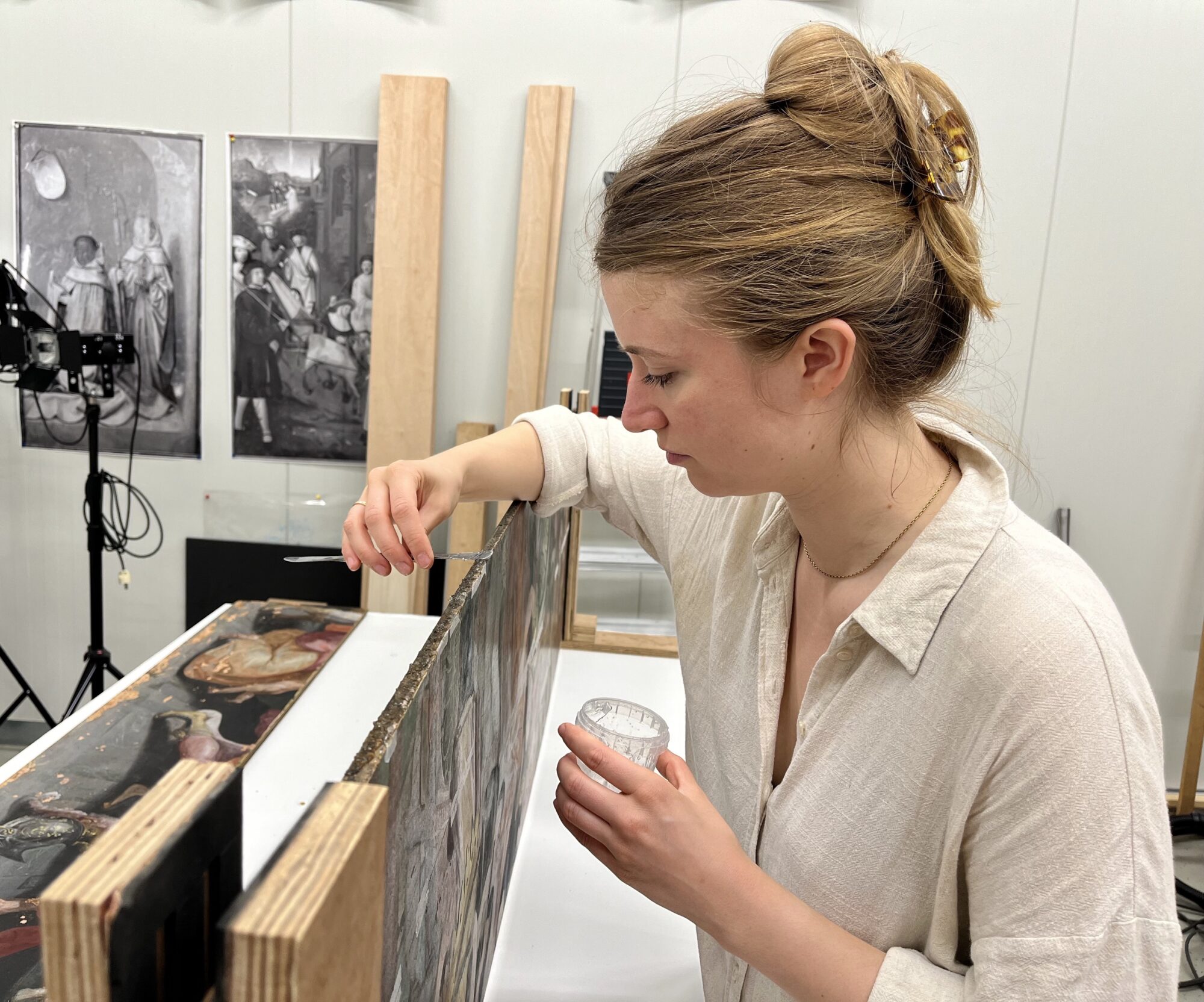
The painting depicts various scenes from chapter ten of the Acts of the Apostles, which tells the story of Saint Peter and the centurion Cornelius. Peter receives a vision in which the heavens open and a large sheet is lowered. This sheet contains all kinds of animals that are considered unclean according to Jewish dietary laws. When Peter refuses to eat these animals, it is explained to him that nothing created by God is unclean.
Subsequently, two soldiers sent by the centurion Cornelius knock on Peter’s door to invite him to their master’s house. Peter accepts the invitation and goes with them. When he arrives at the centurion’s home, the centurion kneels before Peter, but Peter tells him to stand up, explaining that God has shown him that everyone is equal. In the end, Peter baptizes the centurion.
What is remarkable about this work is that the scenes are depicted from right to left.

The painting consists of four oak panels with a horizontal grain and measures 99 cm x 190.3 cm, giving it a relatively elongated format. Upon arrival at the conservation studio, the panel was in a very critical condition. The exact state of the paint layers was difficult to assess because a thick layer of dirt and a yellowed, non-original varnish completely covered the surface. The first step was to clean the painting, which became a challenge. Removing dirt, old varnish, and discoloured retouches that had been on the surface for centuries had to be executed carefully to avoid damaging the original paint layers. Additionally, thorough tests were needed to determine the appropriate method. By cleaning the painting with a combination of various solvent gels and gentle mechanical techniques, the vibrant and intense colour palette was revealed once more.
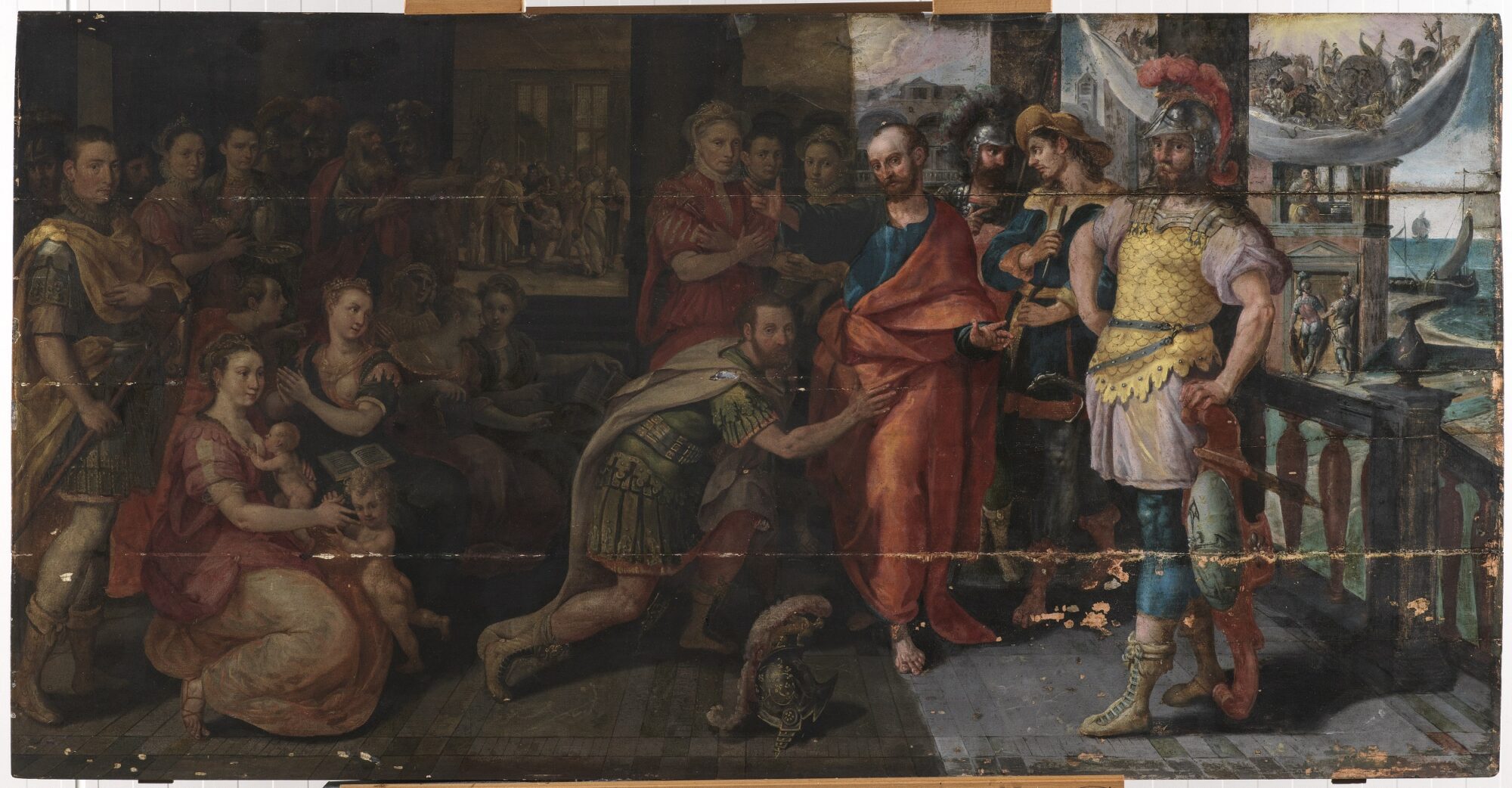

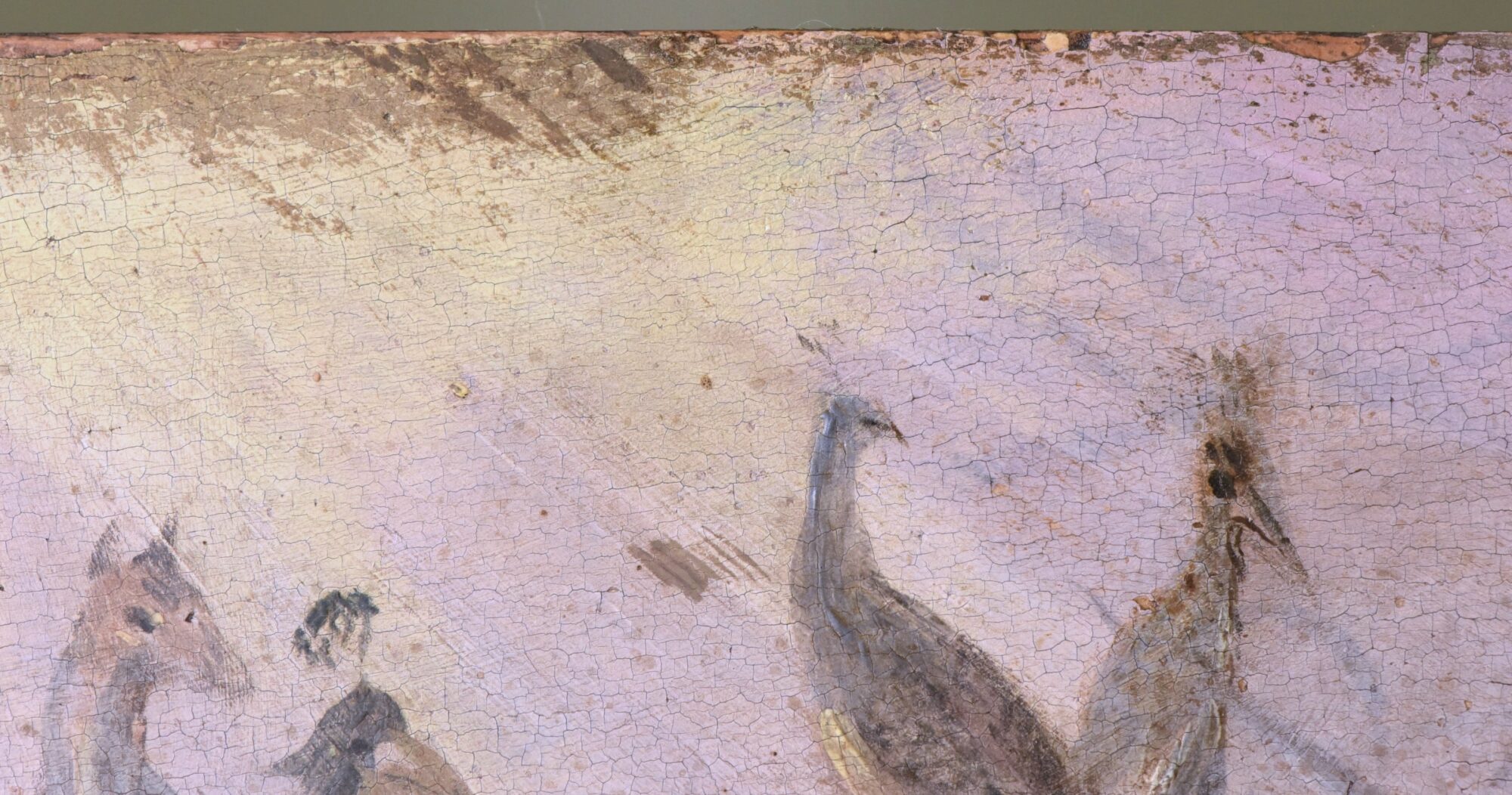
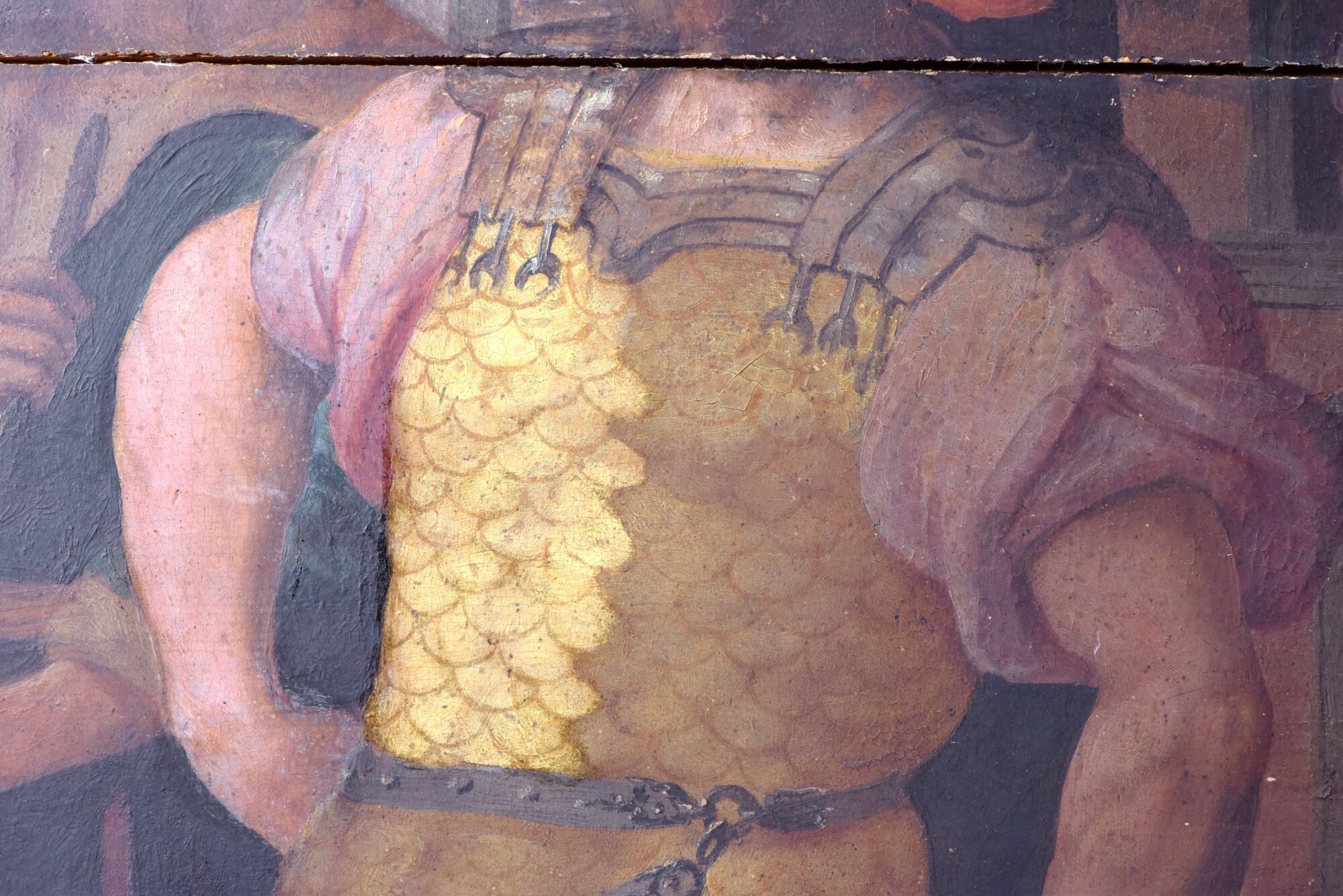
The damage primarily affected the structure of the painting. Two joints (the top and bottom) were completely open, and many cracks weakened the panels.
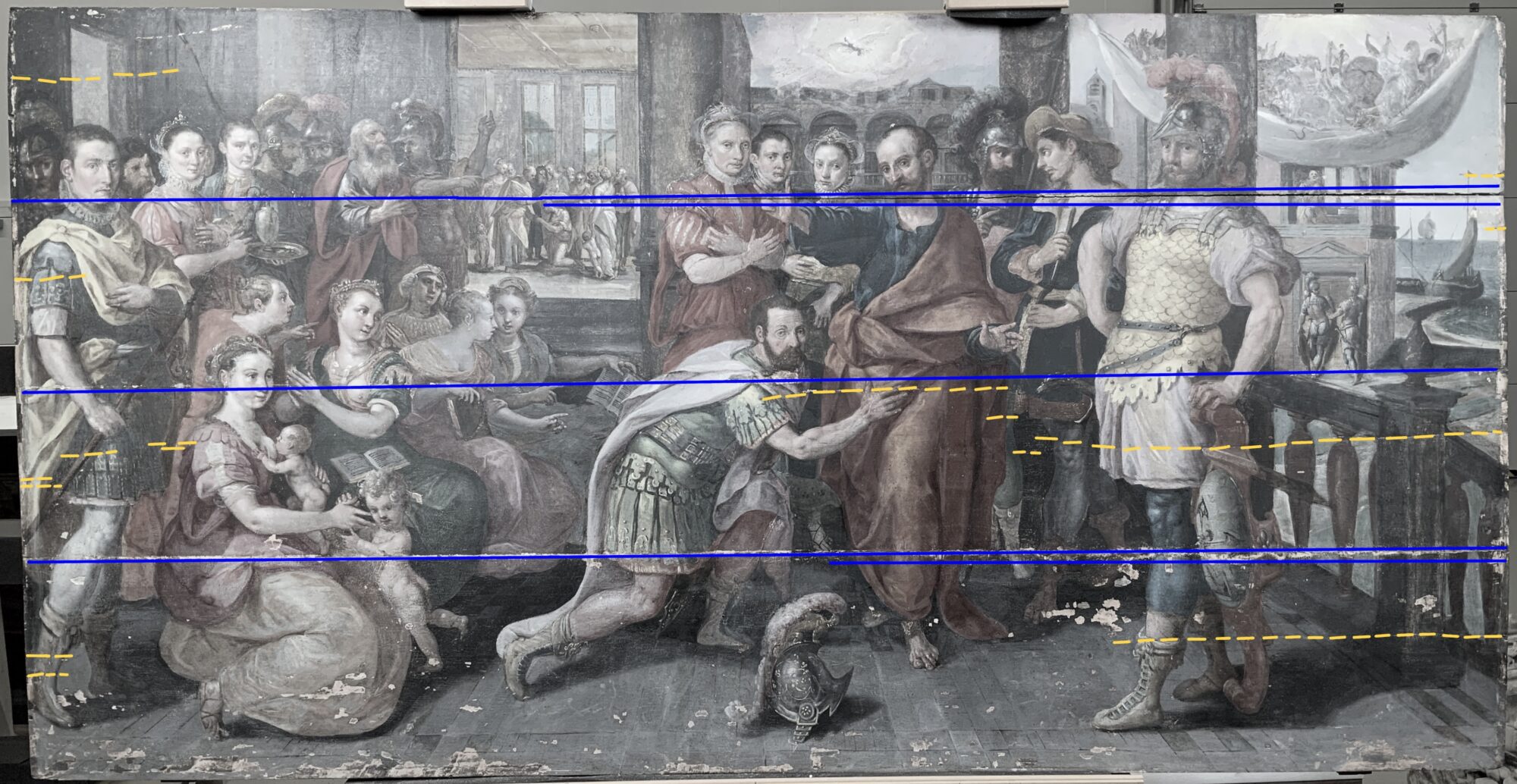
These damages also affected the paint layer, leading to loss. The structural damage was partly the result of, and certainly exacerbated by an old wooden strainer. This supporting structure, which was likely attached to the back of the painting in the 19th century, contributed to the deterioration.
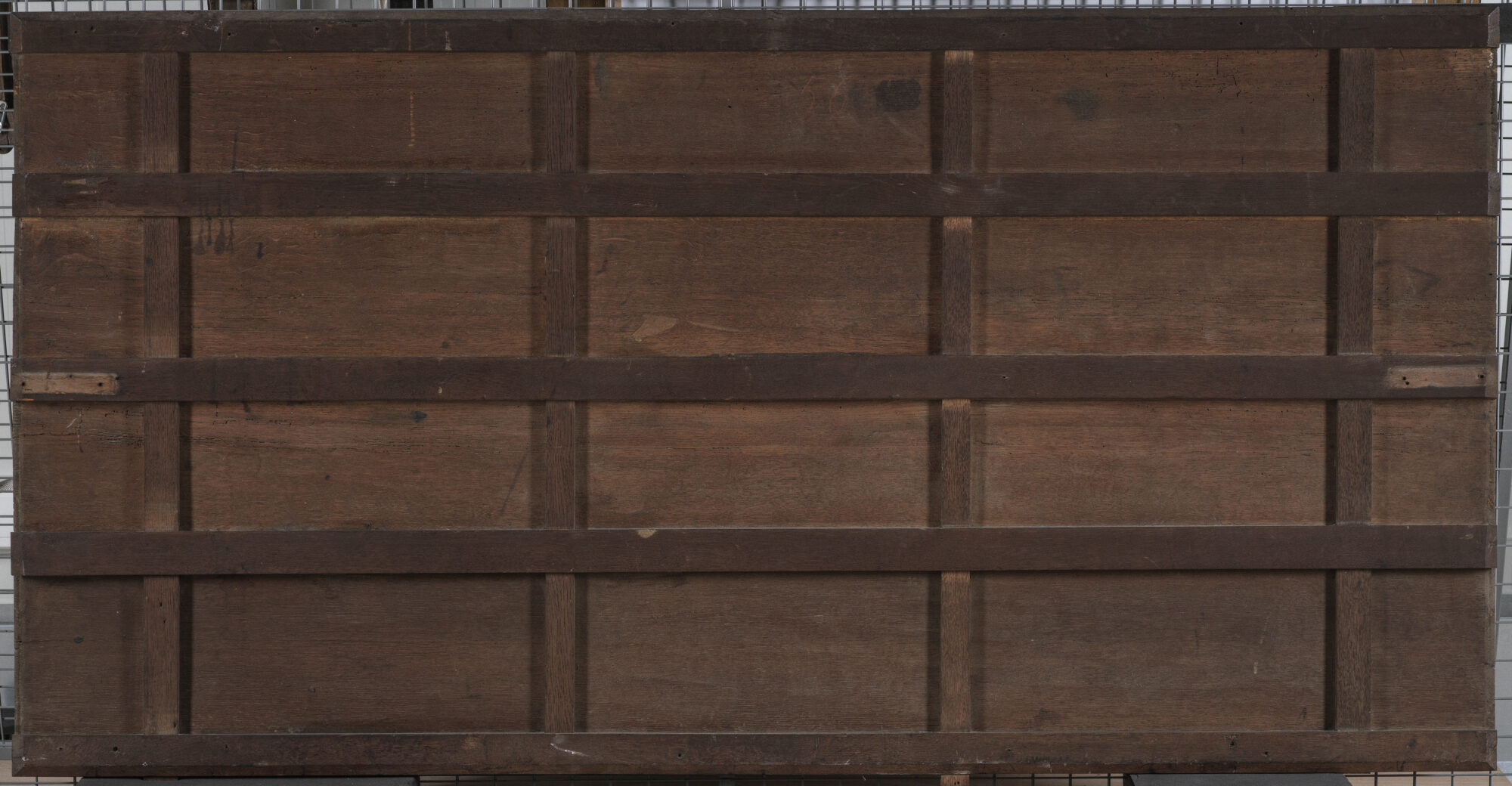
Although the restorers acted to the best of their knowledge at the time, this wooden strainer was not beneficial for the painting’s wooden support in the long term. Additionally, an old woodworm infestation locally weakened the panels. Under the guidance of Sara Mateu, we removed this old, dysfunctional wooden strainer.
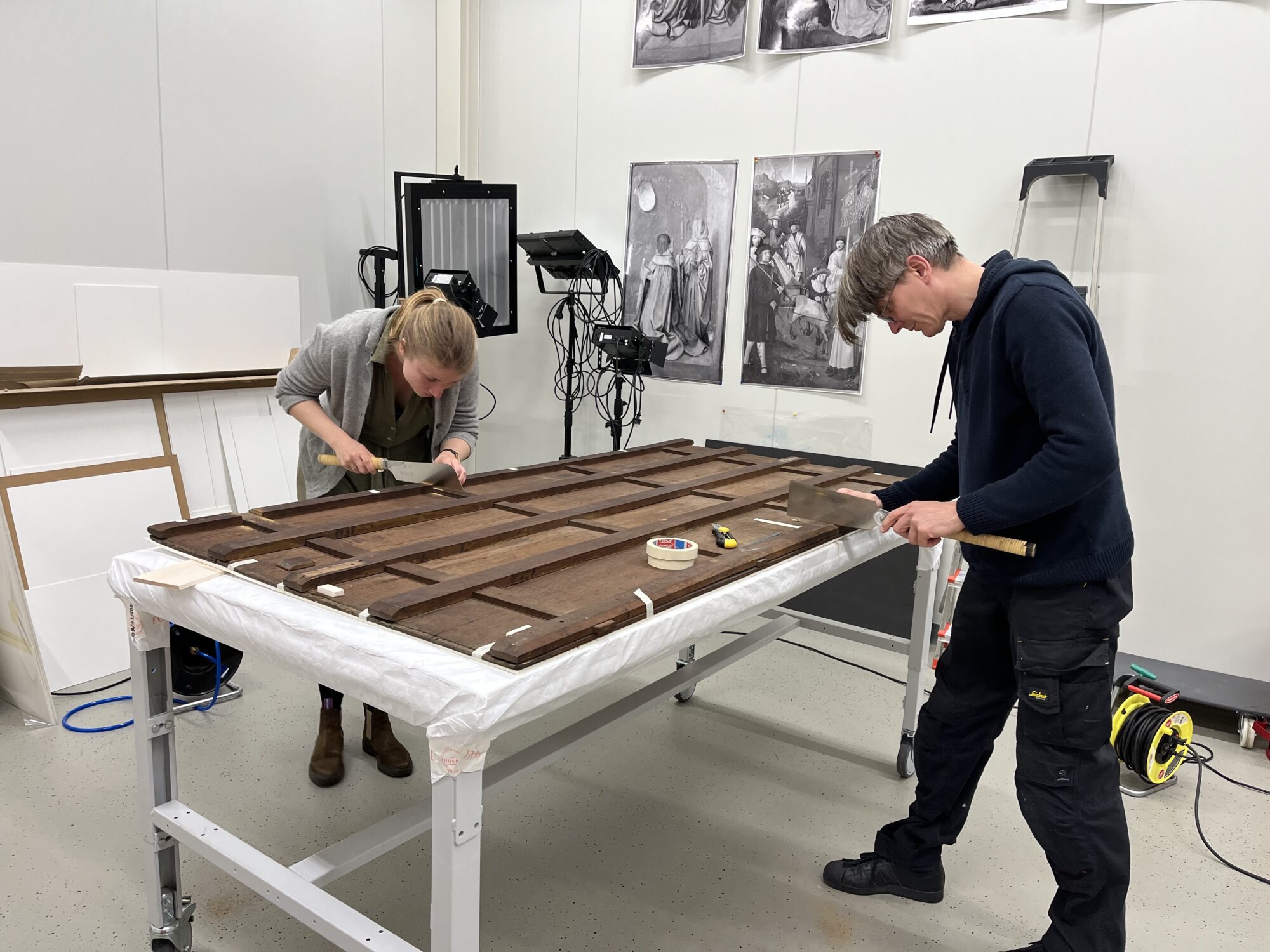
To conserve the cracks and open joints and to properly re-glue them, the top and bottom panels were then dismantled.
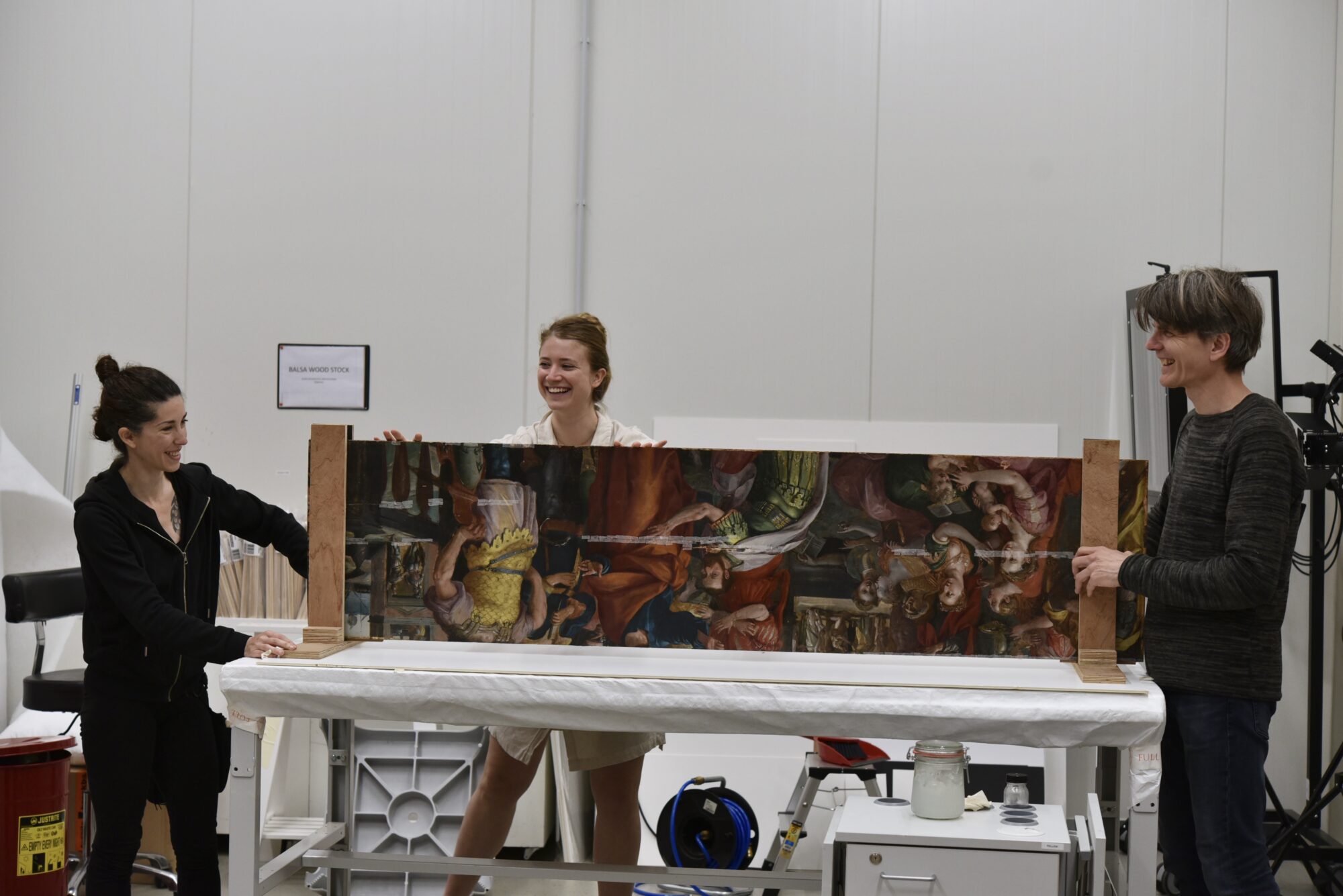
At the moment, this restoration is still ongoing. The structural support requires further conservation, and the filling and retouching of the lost paint layers are yet to be addressed. Interested in seeing the results? Follow us on our website and social media to stay updated!